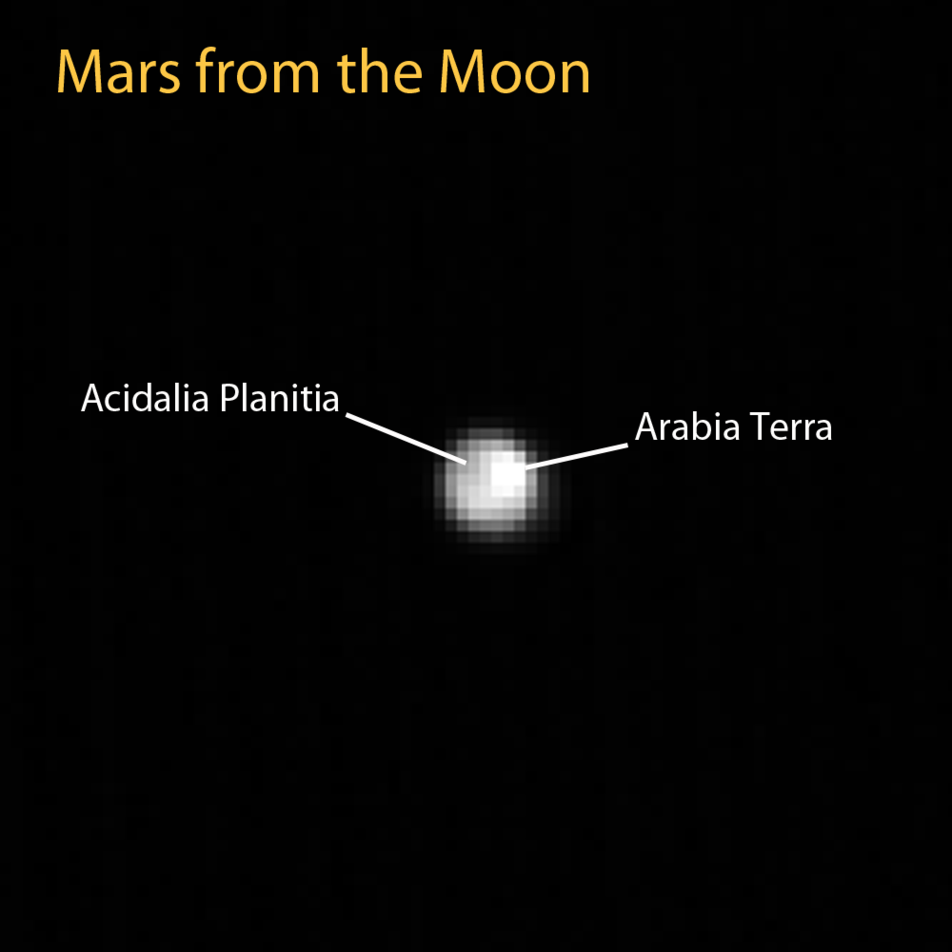
During off-Moon observations on 8 May 2014, LROC captured two images of Mars!

Mars is approximately 10 pixels across in the two NAC images. The size of Mars in the NAC cameras is a function of the Moon-Mars distance, which on 8 May 2014 was about 100 million km. When Mars is at its minimum distance (55 million km), it fills about 14 pixels in the NAC, and when Mars is at its maximum distance (400 million km), it is less than two pixels wide.
These two images were acquired about four hours apart; during this period, Mars rotated roughly 60º degrees in longitude. Both Earth and Mars have similar rotation rates of roughly 15º of longitude per hour. Planetary rotation allows views of different regions of Mars over time. With only ten pixels, however, it is difficult to make out specific martian surface features.
The dark splotch on the center right of the eariler Mars image is Syrtis Major Planum. The dark splotch on the upper left of the later image is Acidalia Planitia, a large lowland basin in the northern hemisphere of Mars. The brighter area in both images is Arabia Terra, a large highlands region also in the northern hemisphere.
Mars features were identified using the MarsWatch tool, and distances were calculated using the SPICE GUI tool.
See more examples of LROC calibration imaging and engineering targets:
The Apollo 15 Lunar Laser Ranging Retroreflector - A Fundamental Point on the Moon!
Commissioning Sequences Pave the Way
Published by J. Stopar on 30 September 2014